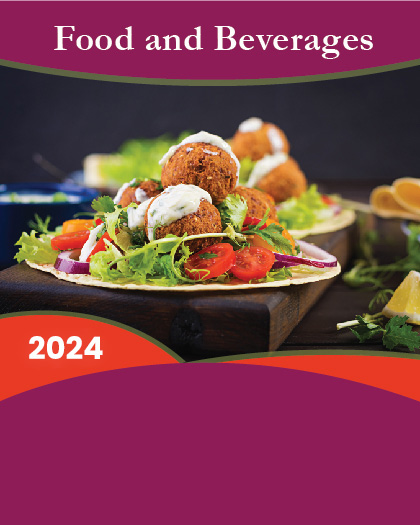Chapter: 1: INTRODUCTION
1.1. Report description
1.2. Key benefits for stakeholders
1.3. Key market segments
1.4. Research Methodology
1.4.1. Primary Research
1.4.2. Secondary Research
1.4.3. Analyst Tools and Models
Chapter: 2: EXECUTIVE SUMMARY
2.1. Key findings of the study
2.1.1. CXO perspective
Chapter: 3: MARKET OVERVIEW
3.1. Market definition and scope
3.2. Key findings
3.2.1. Top investment pocket
3.2.2. Top winning strategies
3.3. Porter's five forces analysis
3.3.1. Bargaining power of suppliers
3.3.2. Bargaining power of buyers
3.3.3. Threat of substitution
3.3.4. Threat of new entrants
3.3.5. Intensity of competitive rivalry
3.4. Top player positioning
3.5. Market dynamics
3.5.1. Drivers
3.5.1.1. Government initiatives and policies on food supply further triggering the demand for emergency food products:
3.5.1.2. Increase in demand for emergency food products from the army sector:
3.5.1.3. Uncertain climatic conditions in North America and Asia-Pacific:
3.5.2. Restraints
3.5.2.1. Unpredictability in demand-supply side of the market:
3.5.2.2. Lower efficiency in distribution channel:
3.5.3. Opportunities
3.5.3.1. Upsurge in consumer preference for natural food products:
3.5.3.2. Strategic collaboration with organized NGOs
3.5.3.3. Rise in number of millennial population:
3.6. Top 10 countries/territories in terms of absolute losses
Chapter: 4: EMERGENCY FOOD MARKET, BY PRODUCT TYPES
4.1. Overview
4.1.1. Market size and forecast
4.2. Ready to eat meals
4.2.1. Key market trends, growth factors and opportunities
4.2.2. Market size and forecast
4.2.3. Market analysis by country
4.3. Protein or fruit bars
4.3.1. Key market trends, growth factors, and opportunities
4.3.2. Market size and forecast
4.3.3. Market analysis by country
4.4. Dry cereal or granola
4.4.1. Key market trends, growth factors, and opportunities
4.4.2. Market size and forecast
4.4.3. Market analysis by country
4.5. Peanut butter
4.5.1. Key market trends, growth factors, and opportunities
4.5.2. Market size and forecast
4.5.3. Market analysis by country
4.6. Dried fruits
4.6.1. Key market trends, growth factors, and opportunities
4.6.2. Market size and forecast
4.6.3. Market analysis by country
4.7. Canned juice
4.7.1. Key market trends, growth factors, and opportunities
4.7.2. Market size and forecast
4.7.3. Market analysis by country
4.8. Non-perishable pasteurized milk
4.8.1. Key market trends, growth factors, and opportunities
4.8.2. Market size and forecast
4.8.3. Market analysis by country
4.9. Infant food
4.9.1. Key market trends, growth factors, and opportunities
4.9.2. Market size and forecast
4.9.3. Market analysis by country
Chapter: 5: GLOBAL EMERGENCY FOOD MARKET, BY REGION
5.1. Overview
5.1.1. Market size and forecast
5.2. North America
5.2.1. Key market trends, growth factors and opportunities
5.2.2. Market size and forecast by product type
5.2.3. Market size and forecast by country
5.2.4. U.S.
5.2.4.1. Market size and forecast, by product type
5.2.5. Canada
5.2.5.1. Market size and forecast, by product type
5.2.6. Mexico
5.2.6.1. Market size and forecast, by product type
5.3. Europe
5.3.1. Key market trends, growth factors and opportunities
5.3.2. Market size and forecast by product type
5.3.3. Market size and forecast by country
5.3.4. Germany
5.3.4.1. Market size and forecast, by product type
5.3.5. France
5.3.5.1. Market size and forecast, by product type
5.3.6. UK
5.3.6.1. Market size and forecast, by product type
5.3.7. Italy
5.3.7.1. Market size and forecast, by product type
5.3.8. Spain
5.3.8.1. Market size and forecast, by product type
5.3.9. Rest of Europe
5.3.9.1. Market size and forecast, by product type
5.4. Asia-Pacific
5.4.1. Key market trends, growth factors and opportunities
5.4.2. Market size and forecast by product type
5.4.3. Market size and forecast by country
5.4.4. Japan
5.4.4.1. Market size and forecast, by product type
5.4.5. China
5.4.5.1. Market size and forecast, by product type
5.4.6. Australia
5.4.6.1. Market size and forecast, by product type
5.4.7. India
5.4.7.1. Market size and forecast, by product type
5.4.8. South Korea
5.4.8.1. Market size and forecast, by product type
5.4.9. Rest of Asia Pacific
5.4.9.1. Market size and forecast, by product type
5.5. LAMEA
5.5.1. Key market trends, growth factors and opportunities
5.5.2. Market size and forecast by product type
5.5.3. Market size and forecast by country
5.5.4. Latin America
5.5.4.1. Market size and forecast, by product type
5.5.5. Middle East
5.5.5.1. Market size and forecast, by product type
5.5.6. Africa
5.5.6.1. Market size and forecast, by product type
Chapter: 6: COMPANY PROFILES
6.1. CHB Group
6.1.1. Company overview
6.1.2. Company snapshot
6.1.3. Product portfolio
6.2. THE COCA COLA COMPANY
6.2.1. Company overview
6.2.2. Company snapshot
6.2.3. Operating business segments
6.2.4. Product portfolio
6.2.5. Business performance
6.2.6. Key strategic moves and developments
6.3. Conagra Brands, Inc.
6.3.1. Company overview
6.3.2. Company snapshot
6.3.3. Product portfolio
6.3.4. Key strategic moves and developments
6.3.5. Business performance
6.4. Del Monte Foods, Inc.
6.4.1. Company overview
6.4.2. Company snapshot
6.4.3. Product portfolio
6.4.4. Key strategic moves and developments
6.4.5. Business performance
6.5. General Mills Inc.
6.5.1. Company overview
6.5.2. Company snapshot
6.5.3. Product portfolio
6.5.4. Key strategic moves and developments
6.5.5. Business performance
6.6. Kellogg Company
6.6.1. Company overview
6.6.2. Company snapshot
6.6.3. Product portfolio
6.6.4. Key strategic moves and developments
6.6.5. Business performance
6.7. The Kraft Heinz Company
6.7.1. Company overview
6.7.2. Company snapshot
6.7.3. Operating business segments
6.7.4. Product portfolio
6.7.5. Business performance
6.8. Nestle
6.8.1. Company overview
6.8.2. Company snapshot
6.8.3. Operating business segments
6.8.4. Product portfolio
6.8.5. Business performance
6.8.6. Key strategic moves and developments
6.9. PepsiCo, Inc.
6.9.1. Company overview
6.9.2. Company snapshot
6.9.3. Operating business segments
6.9.4. Product portfolio
6.9.5. Business performance
6.9.6. Key strategic moves and developments
6.10. The Princes Group
6.10.1. Company overview
6.10.2. Company snapshot
6.10.3. Product portfolio
6.10.4. Key strategic moves and developments























